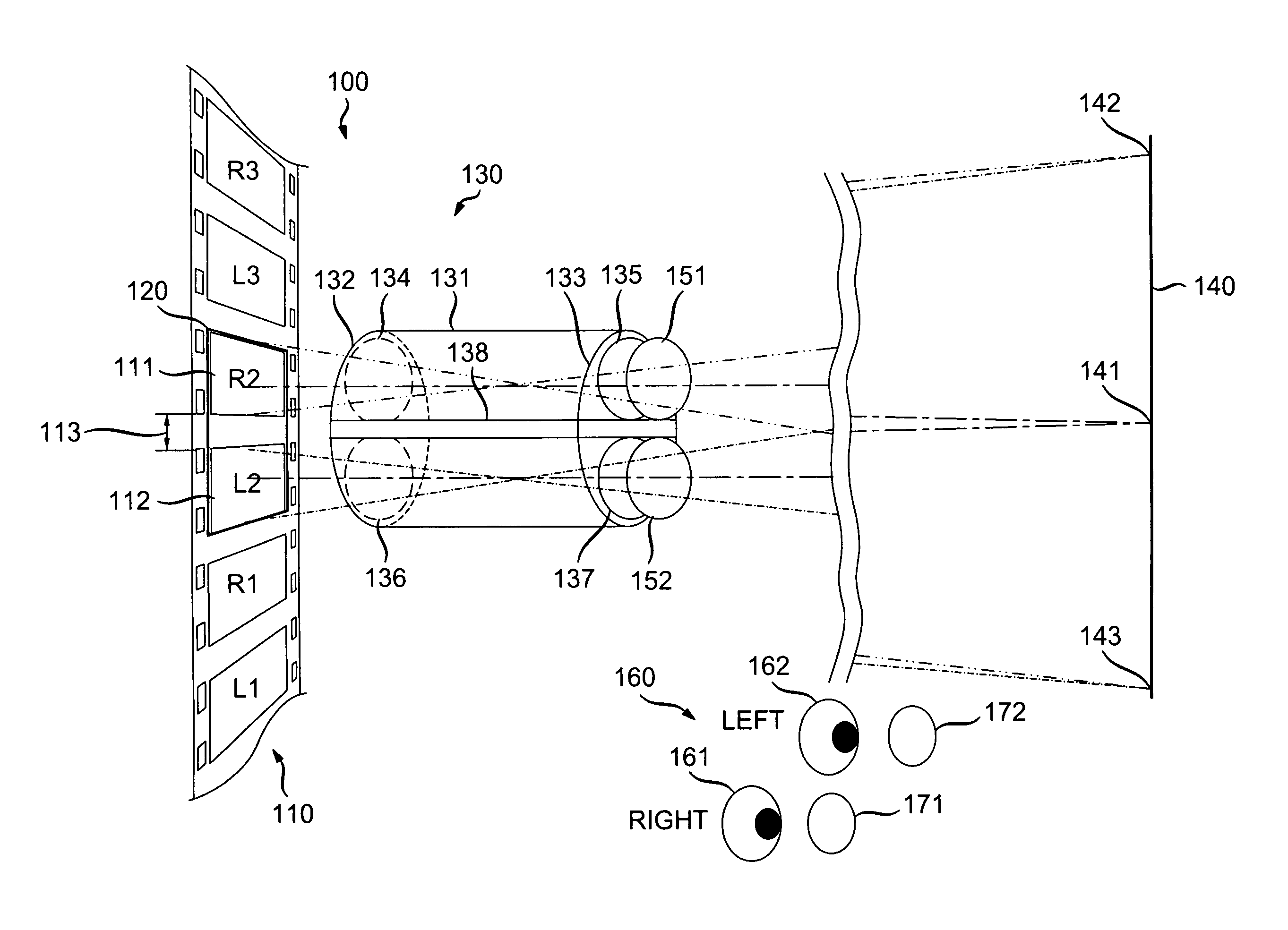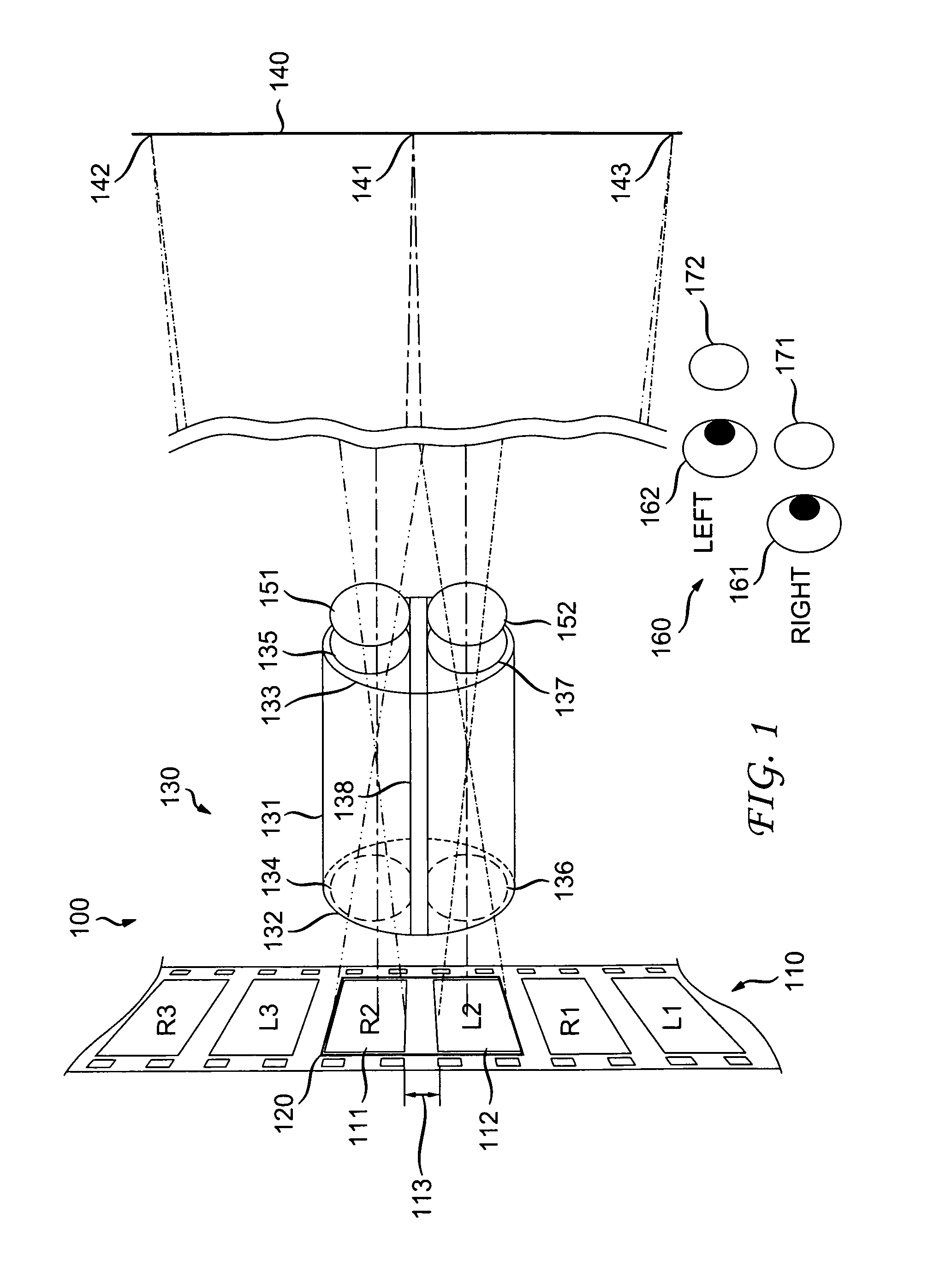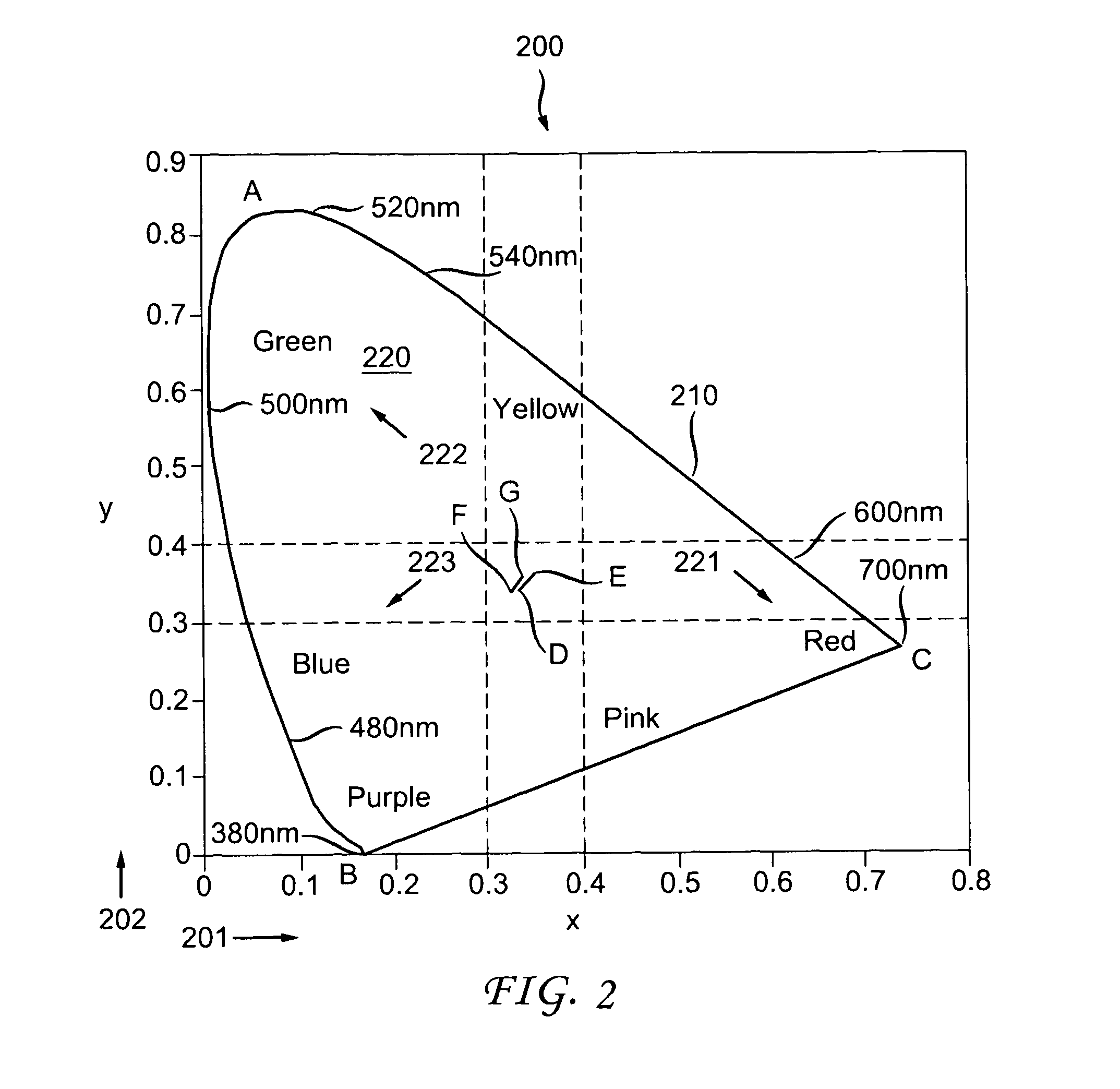Method and system for color correction for three-dimensional (3D) projection
- Summary
- Abstract
- Description
- Claims
- Application Information
AI Technical Summary
Benefits of technology
Problems solved by technology
Method used
Image
Examples
Embodiment Construction
[0019]One embodiment of the present invention relates to a method for producing a color-corrected stereoscopic film. In this embodiment, information relating to spectral transmission characteristics of the stereoscopic projection system is obtained, either by measurement, estimation, simulation, or otherwise provided. Specifically, the information relates to a “color error” or discoloration arising from one of more filters used for projecting stereoscopic images and for viewing the projected images. A dye density adjustment to one or more of three (cyan, yellow, and magenta) film dyes used for producing the stereoscopic film is determined based on the spectral transmission characteristics. A corresponding change in the density of the negative generated by a film recorder for each of the three dyes is also determined, such that a film print made from the film negative will be substantially color-corrected, thus minimizing the perception by the audience that the projected image is ‘di...
PUM
 Login to View More
Login to View More Abstract
Description
Claims
Application Information
 Login to View More
Login to View More - R&D
- Intellectual Property
- Life Sciences
- Materials
- Tech Scout
- Unparalleled Data Quality
- Higher Quality Content
- 60% Fewer Hallucinations
Browse by: Latest US Patents, China's latest patents, Technical Efficacy Thesaurus, Application Domain, Technology Topic, Popular Technical Reports.
© 2025 PatSnap. All rights reserved.Legal|Privacy policy|Modern Slavery Act Transparency Statement|Sitemap|About US| Contact US: help@patsnap.com



